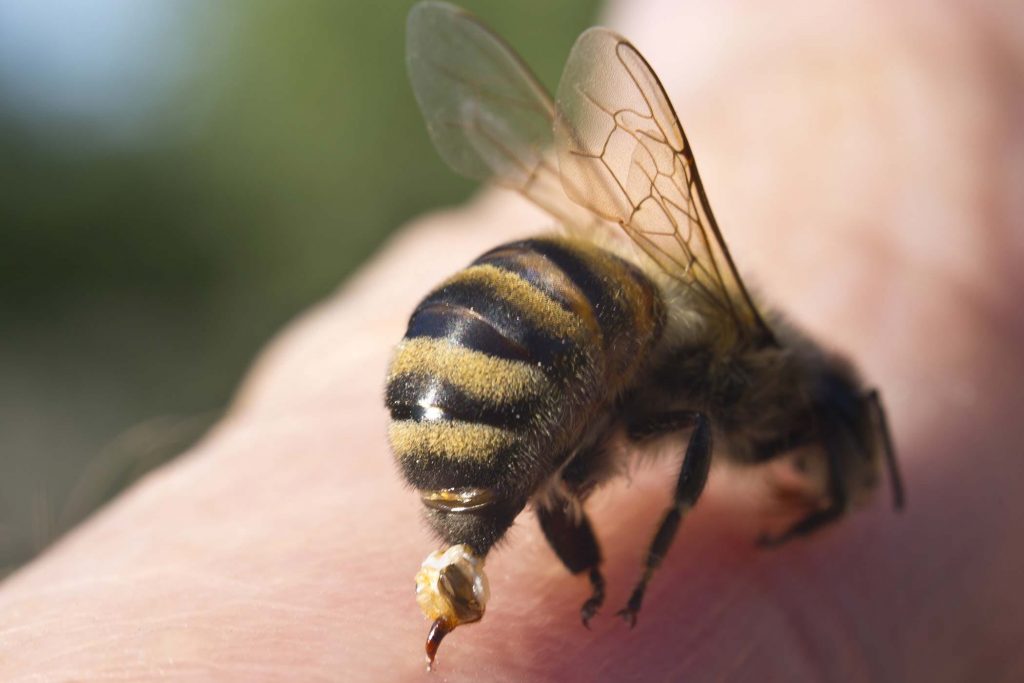Bee Sting First Aid Tips
Bee stings can ruin an outdoor adventure or even playtime in the yard very quickly for you and your kids. Even though it might be a little scary for kids, treating a bee sting is pretty easy for those who don’t experience an allergic reaction.
You might be surprised to learn that most bees don’t sting – they might dive bomb you, even fly near your face as a way of staking their territory. But if you just go about your business and don’t swat at them (they’re disturbed by fast, threatening movements), they’ll usually go about theirs and won’t sting you.
But those species that do sting can be plenty painful and kids can be really scared and upset when it happens. Learn more about which bees sting and which don’t.

How to treat a bee sting
If you or your child do experience a bee sting, if the stinger is left behind, scrape it with a credit card to remove it. If possible, don’t pull it out with a tweezers or your fingers as you may squeeze the rest of the venom out of it, which will create more of the stinging sensation.
Treat the sting site with soap and water, a cold compress to relieve the burning sensation, and hydrocortisone spray or cream to relieve the itching. You may also take an over-the-counter pain reliever to help with discomfort (Ibuprofen is best, as it reduces inflammation). If itching or swelling isn’t relieved by the hydrocortisone cream, take an oral antihistamine like Benadryl (Diphenhydramine) and avoid scratching the area as it will become further irritated.
Signs of an allergic reaction to a bee sting
Some people are allergic to bee stings. Unfortunately, they usually don’t discover this for the first time until they are stung. Signs of a mild allergic reaction to bee stings include:
- Hives
- Swelling in areas away from the sting
If either of these symptoms are seen, consult your doctor for treatment.
Signs of anaphylaxis, a life-threatening allergic reaction to bee stings include:
- Swollen lips
- Dizziness
- Difficulty breathing or swallowing
If any of these reactions occur, call 911 or drive them immediately to the closest ER.
Any vacation or playtime becomes a problem really fast when an injury occurs. Parents should always keep an emergency first aid kit in their car or truck, at home, and carry a small first aid kit when hiking or camping or playing in the great outdoors.
